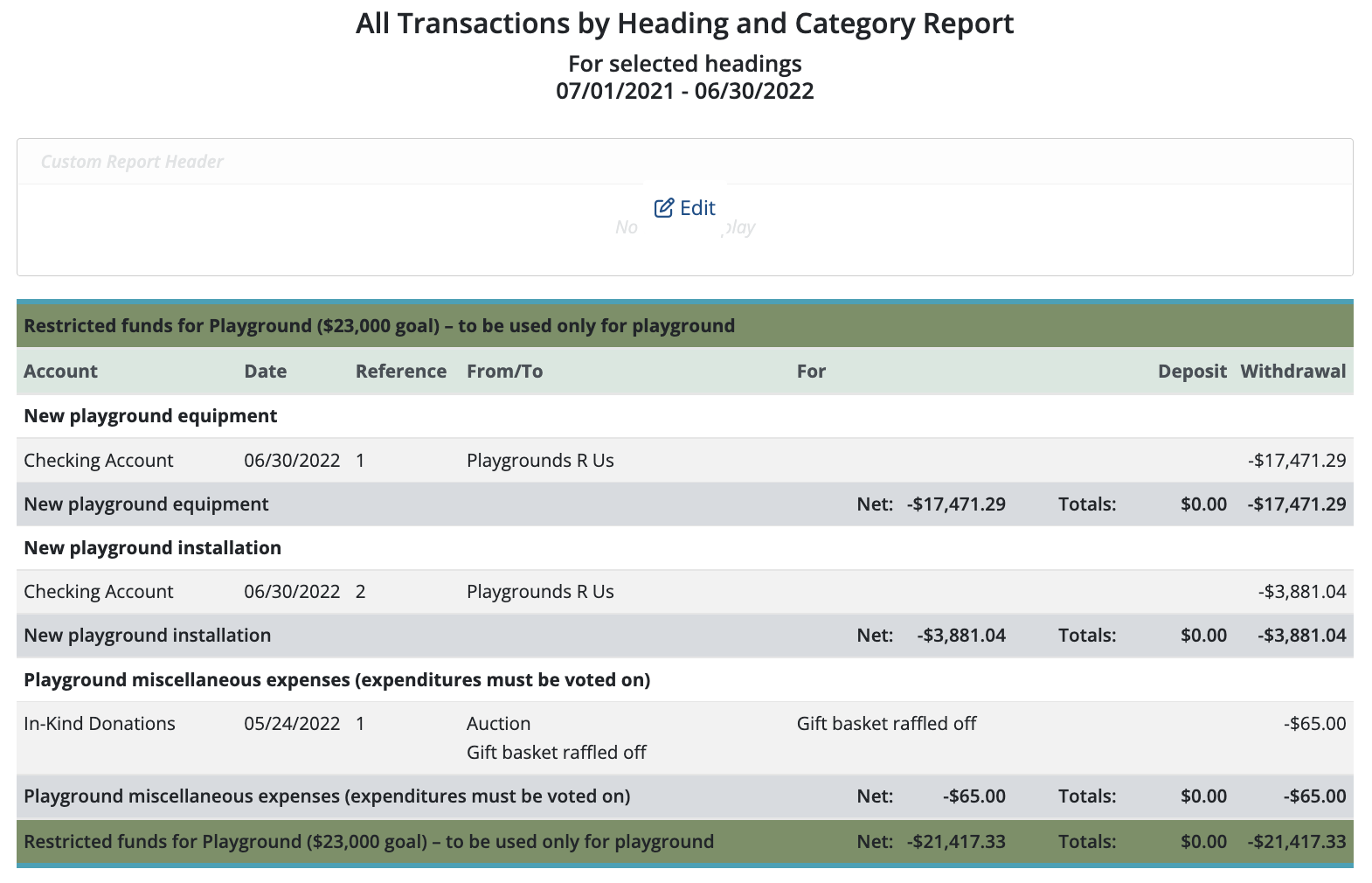- Home
- Knowledge Base
- Budget (aka Chart of Accounts)
- How to handle Restricted funds
- Home
- Knowledge Base
- Strategy & Tips
- How to handle Restricted funds
How to handle Restricted funds
Watch Video
Some groups set aside funds that can only be used for a particular purpose (sometimes referred to as restricted funds or donor-designated funds). Perhaps someone donated money, or your group has fundraised for a specific, large purchase. Here is how you can keep track of these funds and produce reports that will provide transparency to your group.
Click on the Budget icon in the sidebar:
![]()
Click Add Heading:

Name the Heading. Some groups use “Restricted Funds”. Others use “Reserved Funds”. To understand the difference between these two concepts, check out our blog.

Next, click Add Category to reflect how you’ll be spending that earmarked money.

You may just need one Category, or several, depending upon your project. Make sure that you enter the amount of money you already have in the Budgeted Expenses column. This is money that you have available to spend that’s why it goes in the Budgeted Expense column.

Click Save Changes in your Budget.

Now when you spend money on this project, you will associate the expense with the appropriate Category.
When it comes time to report on this project, the Treasurer’s Report is a useful tool.
You’ll find it under the Reports icon on the toolbar. Reports > Performance Reports > Treasurer’s Report.
You will see the Actual Income, Actual Expenses, Year to Date, Net Budget, and More/-Less which tells you exactly how you are performing in each of the budget categories and the whole heading with all the budget categories.
The More/-Less column is where you will see the running balance of the budget category. So in this case, there was $18,000 available to spend on New playground equipment, $17,471.29 was spent so there is $528.71 left to spend.

To see all of the transactions associated with a particular Heading, such as Restricted Funds,
click the Heading name and it will open the All Transactions by Heading and Category Report.
Now you can see the detailed activity behind the Heading:

 Connect your Venmo account to MoneyMinder PRO to directly download transactions, saving you time and effort. You just review the transactions to ensure they are properly categorized and fill out any required fields.
Connect your Venmo account to MoneyMinder PRO to directly download transactions, saving you time and effort. You just review the transactions to ensure they are properly categorized and fill out any required fields. Connect your Bank, Square and PayPal accounts to MoneyMinder PRO to directly download transactions, saving you time and effort. You just review the transactions to ensure they are properly categorized and fill out any required fields.
Connect your Bank, Square and PayPal accounts to MoneyMinder PRO to directly download transactions, saving you time and effort. You just review the transactions to ensure they are properly categorized and fill out any required fields. Connect your Bank, Paypal and Square accounts to MoneyMinder PRO to directly download transactions, saving you time and effort. You just review the transactions to ensure they are properly categorized and fill out any required fields.
Connect your Bank, Paypal and Square accounts to MoneyMinder PRO to directly download transactions, saving you time and effort. You just review the transactions to ensure they are properly categorized and fill out any required fields. Connect your Bank, Paypal and Square accounts to MoneyMinder PRO to directly download transactions, saving you time and effort. You just review the transactions to ensure they are properly categorized and fill out any required fields.
Connect your Bank, Paypal and Square accounts to MoneyMinder PRO to directly download transactions, saving you time and effort. You just review the transactions to ensure they are properly categorized and fill out any required fields. Join It is a membership management service that helps businesses and nonprofits effectively sell, track, and grow their membership.
Join It is a membership management service that helps businesses and nonprofits effectively sell, track, and grow their membership.